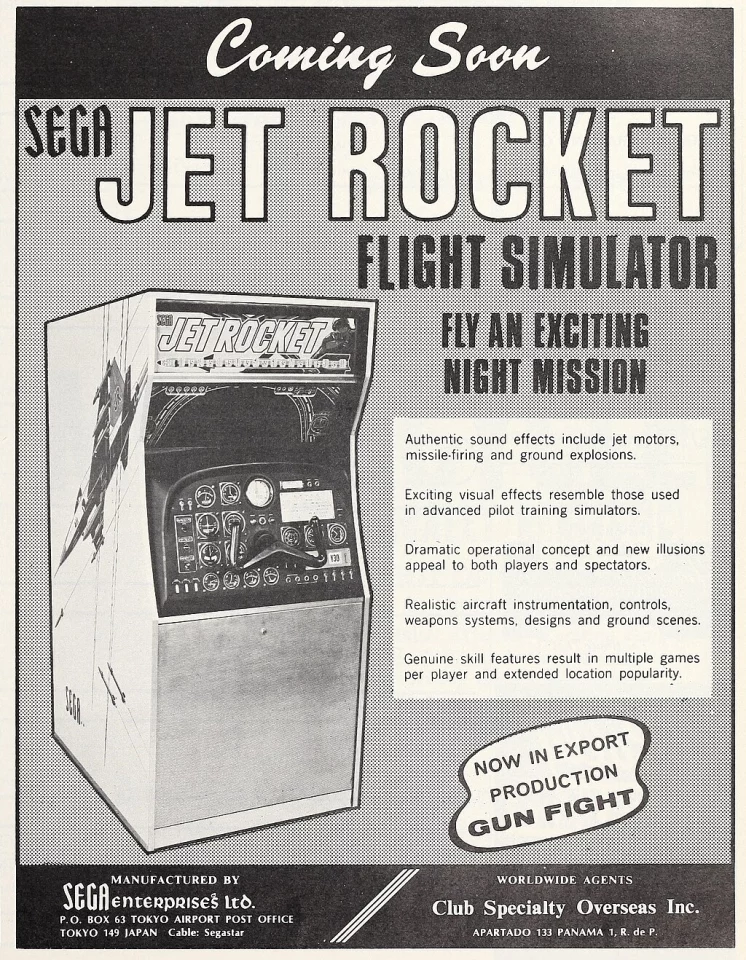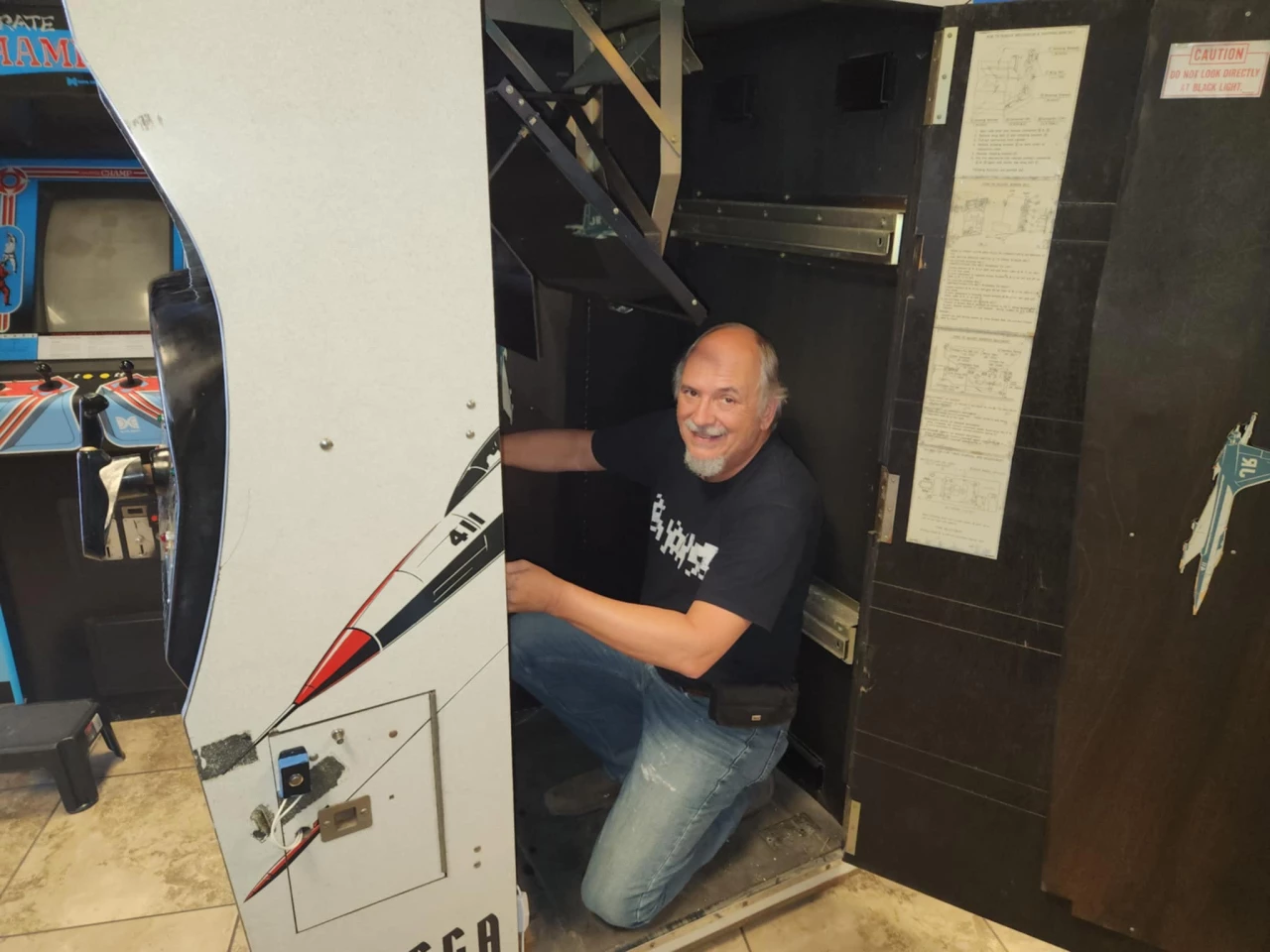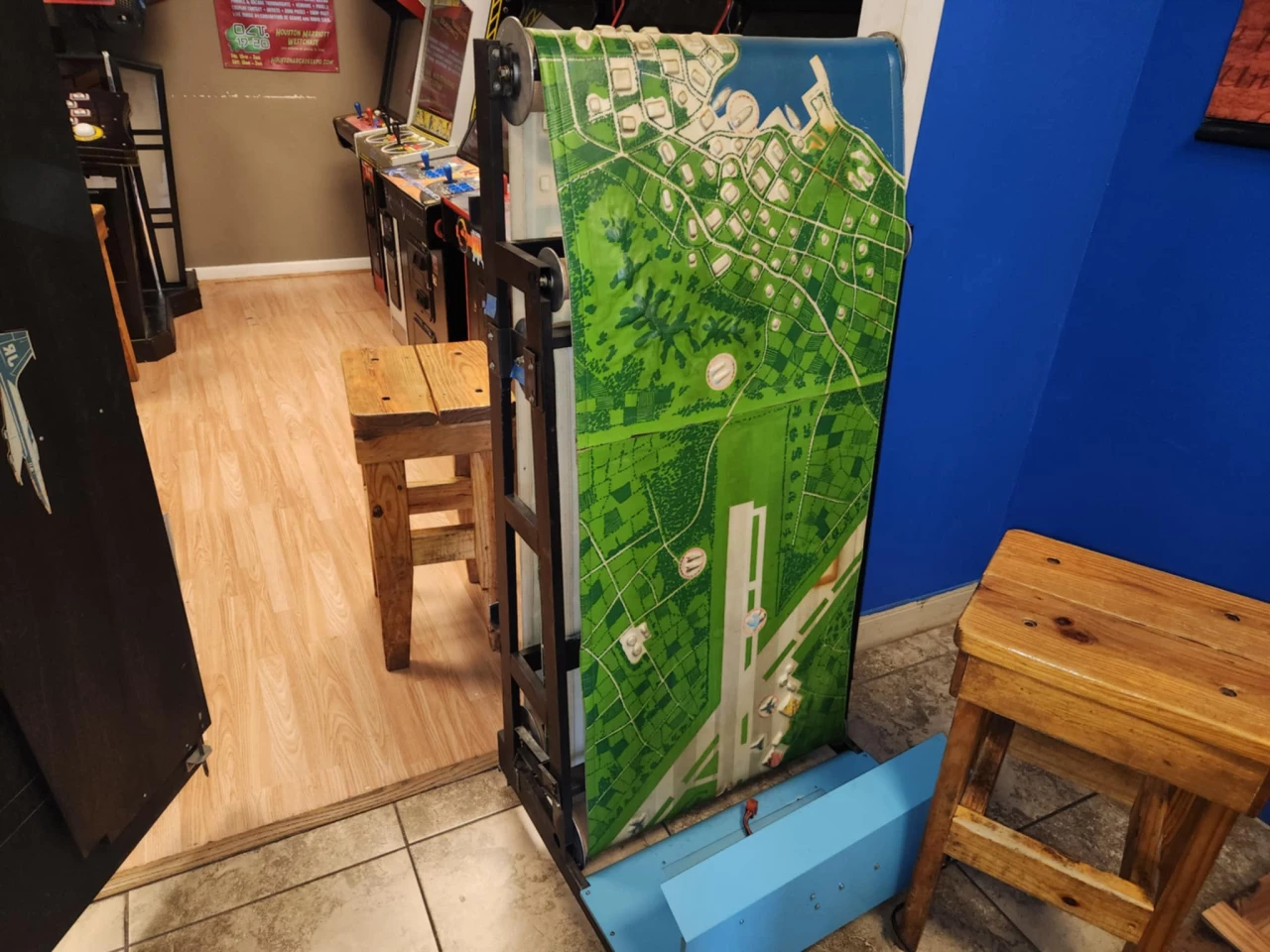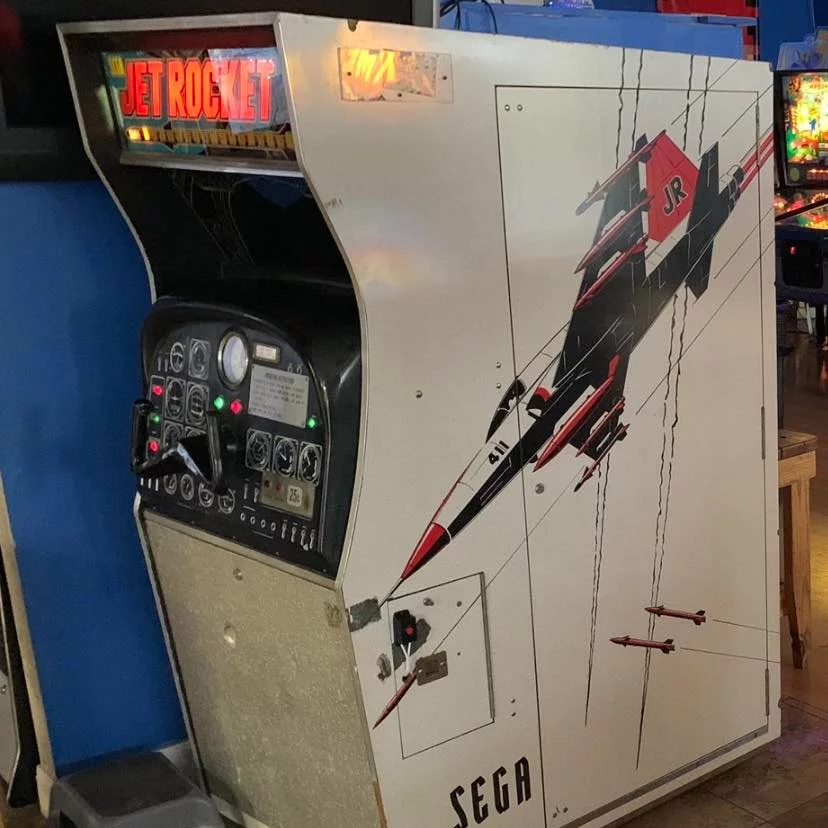Back in 1970, Sega introduced an arcade game that would pave the way for many of today's most popular video games. Known as Jet Rocket, the electromechanical marvel boasted several world-firsts – even though most people today don't know it ever existed.
Jet Rocket's premise was a simple one.
The player was steering an air force jet on a nighttime mission, pushing a trigger button to shoot rockets at military targets passing by on the ground below. Those targets included fuel dumps, missile sites and air strips. Successful hits – good for five points each – were indicated by a burst of light at the hit site along with the sound of an explosion.
Keep in mind, though, all of this was managed without a computer or even a video screen. Nonetheless, Jet Rocket was the world's first flight simulator game, the first first-person shooter game, and the first game in which the player made their way through a virtual world (known as an "open world" game).

Origin story
Jet Rocket was developed by Sega in the late 1960s, back when the Japan/Hawaii-based company provided coin-operated games to US military bases in Japan. It was released worldwide in August of 1970, soon becoming very popular in numerous markets.
Earlier that same year, Sega debuted the game to potential buyers at an expo in the mainland US, where it was likewise well-received. Unfortunately for Sega, though, three Chicago-based companies liked it so much that they immediately produced and released their own blatant, unlicensed copies of it.
These games included Williams' Flotilla, Bally's Target Zero, and the Chicago Coin Machine Company's Night Bomber. Needless to say, those imitators impacted sales of the game in the North American market.
"Sega said, 'Man we've got a hit on our hands.' They went back and churned them out, just started making them left and right," says Rusty Key, owner of a Jet Rocket game which he fully restored. "By the time they got them made and shipped back over to the US, Williams and all the others had cornered the market. They [Sega] looked like the ones who were doing the copying."
Thanks mainly to the emergence of the first new-fangled video games, neither Jet Rocket nor its clones were manufactured for more than a few years. That said, in 1977 Sega did release a helicopter-flying successor to Jet Rocket known as Heli-Shooter, which still lacked a screen but did incorporate a microprocessor.

Behind the scenes
Given that Jet Rocket had neither a screen nor a microprocessor, just how did it work? Well, bear with us, as things are about to get complicated …
Inside the game's rather enormous cabinet was a large vertically oriented conveyor-belt-like "canvas" with a flexible foam relief map of the landscape (including the targets) on its outer surface. Located between the player's face and the continuously scrolling canvas was a mirror, which was angled about 45 degrees downward/forward to reflect the canvas.

As the player looked into the cabinet's window – as if they were looking out the front canopy of their jet – what they saw was a three-dimensional horizontal reflection of the canvas in that mirror. What's more, when they turned the control panel's steering yoke to one side or the other, the mirror would tilt to either side accordingly, allowing the jet to bank left or right across the landscape.
The whole internal setup was illuminated by a black light, causing the painted-on highlights of the landscape to fluoresce against their dark nocturnal backdrop. Check out the gameplay on Rusty's Jet Rocket machine – which you can play at his Houston-based arcade, The Game Preserve – in the following video. The article continues below it.
Release the rockets
When the player saw a target approaching, they would steer their jet in such a way that its rocket sight (a projected spot of light) would fall in the path of that target. They would then press a trigger button at one end of the yoke – repeatedly, if necessary – to launch their rockets. The player had to get the angle and the timing just right, though, in order to hit the target.
As the virtual rockets flew through the air, the player would see them as orange streaks of light moving from either side of the jet down to the ground. This illusion was managed via a V-shaped array of sequentially illuminating lights located inside the cabinet down by the player's legs.
The reflection of those lights was captured by a downward-angled sheet of clear Plexiglass, situated between the player's face and the canvas-mirror. This means that the player was looking through the Plexiglass – on which the rocket lights were reflected – to the mirror. Therefore, they saw the lights superimposed over their view of the landscape.

A hit and a miss
If the player was successful at hitting the target, the latter would illuminate from within, plus the machine would emit the sound of an explosion. But just how did the game know when a target was hit, and how did it make that target glow?
Putting it simply, the player had to be pressing the trigger just as both the electronic mirror-positioning pads and the target on the canvas were in the correct positions relative to one another. Doing so closed a previously open electrical circuit, which caused a light beneath the canvas to illuminate. That light shone through the foam target, as that target passed over the light.
Given the fact that no wiring was integrated into the canvas, though, you might wonder how the positions of the targets on that canvas could be monitored. Once again, just bear with us for a bit …
Inside the cabinet was a row of five pairs of finger-like prongs with an electric current running through them. All of these prongs brushed along the underside of the canvas as it scrolled past. Each pair corresponded to one of five "target areas" which were arranged side-by-side to form a horizontal row of lights beneath the canvas, spanning the width of the landscape. Every target was located in one of these areas.
On the underside of the canvas, located a set distance from each target, was a square of electrically conductive flexible steel mesh. As that square scrolled by, it contacted the pair of prongs corresponding to that particular target's zone, grounding the prongs in the process.
This closed the aforementioned circuit, but only if the trigger was currently being pressed. As a result, the light in that zone would flare right as the target passed over it. The sound effect would also be triggered, plus five points would be added to the player's score.
Clever, huh?

Jet Rocket in 2024
It's hard to say how many functional Jet Rocket games are still in existence today, but there definitely can't be many, even if you include the clones. Rusty Key paid just US$100 for his rig, although it required extensive restoration to get back into running order.
He estimates that a fully restored unit would likely sell for at least $1,000, which actually sounds pretty reasonable. Key is quick to point out, however, that the game is huge and heavy – you can actually go inside the cabinet – so its market is limited. Keeping it running would also definitely require some electromechanical aptitude.
For Rusty, though, all of the hassles are worth it in order to keep such a piece of history alive.
"Ingenuity seems to be a trait of a bygone era," he tells us. "To figure out how to do something with limited materials is a skillset on full display in Jet Rocket. It's just as appealing today as it was 50 years ago."
For a more in-depth explanation of Jet Rocket's workings and gameplay, take a peek at the following demo/interview with Key kindly provided to us by Todd Tuckey from TNT Amusements.
And if you think that such contraptions are purely a thing of the past, check out our article on the recently built one-off Dual Coincidence. It may just be the most complex electromechanical game ever made.








